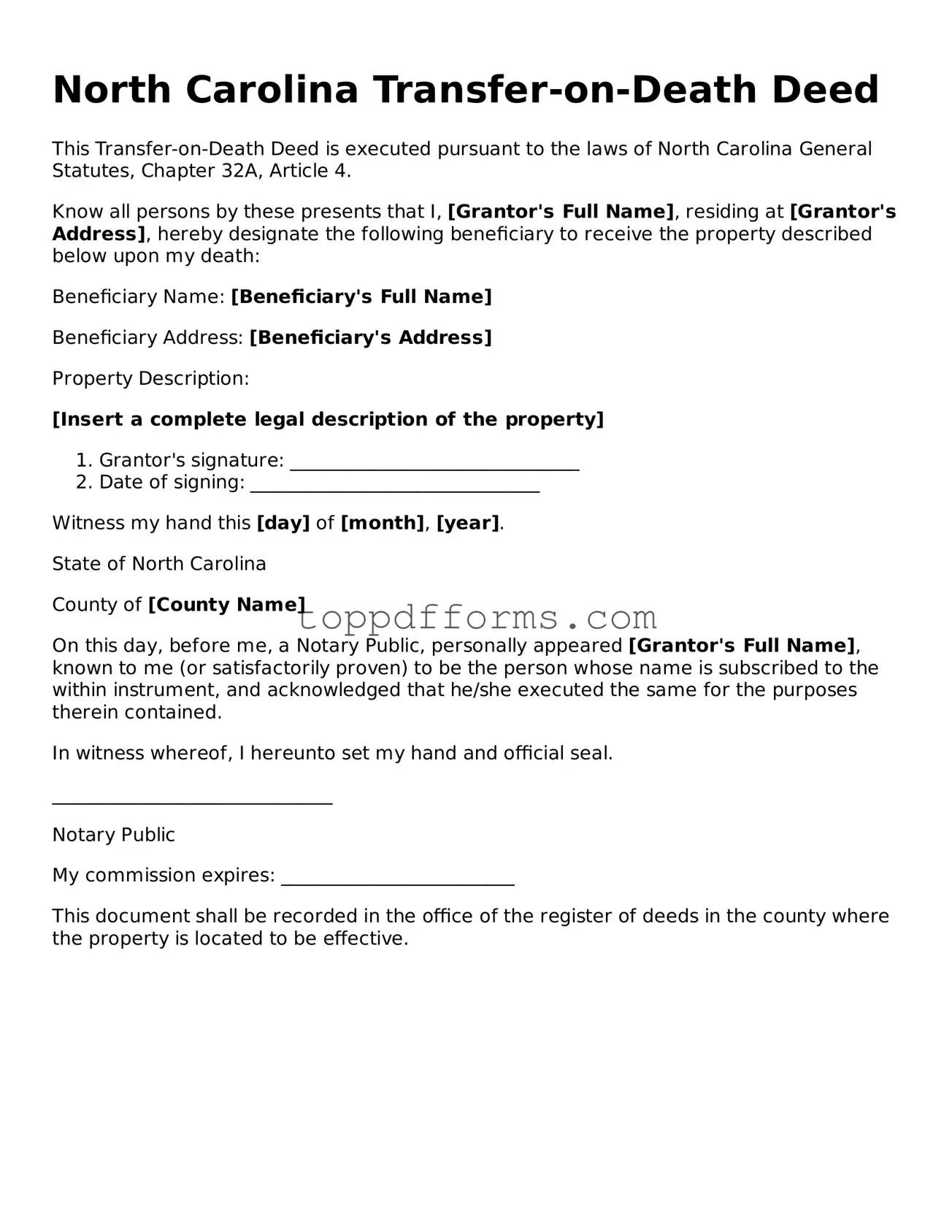What is a Transfer-on-Death Deed in North Carolina?
A Transfer-on-Death Deed (TOD Deed) is a legal document that allows property owners in North Carolina to transfer real estate to designated beneficiaries upon the owner's death. This deed enables the property to bypass probate, simplifying the transfer process for heirs.
Who can use a Transfer-on-Death Deed?
Any individual who owns real property in North Carolina can utilize a Transfer-on-Death Deed. This includes homeowners and property investors. However, it is essential to ensure that the deed complies with state laws and is executed properly.
How does a Transfer-on-Death Deed work?
Upon the death of the property owner, the designated beneficiaries automatically receive ownership of the property without the need for probate. The deed must be recorded with the local register of deeds before the owner's death to be effective.
Can I change or revoke a Transfer-on-Death Deed?
Yes, a Transfer-on-Death Deed can be revoked or changed at any time before the owner's death. This can be done by executing a new deed or by formally revoking the existing deed. It is important to follow the proper legal procedures for revocation to ensure the changes are valid.
Are there any limitations on who can be named as beneficiaries?
Beneficiaries can be individuals or entities, such as trusts or organizations. However, there are limitations regarding the number of beneficiaries and the types of entities that can be named. It is advisable to consult legal guidance to ensure compliance with state regulations.
What happens if a beneficiary predeceases the property owner?
If a beneficiary named in the Transfer-on-Death Deed dies before the property owner, their share typically passes to their heirs, unless otherwise stated in the deed. It is crucial to consider alternative beneficiaries in such cases to avoid complications.
Is there a cost associated with creating a Transfer-on-Death Deed?
There may be costs involved in drafting and recording the deed. Legal fees for assistance in preparing the document and filing fees at the local register of deeds office can vary. It is wise to budget for these expenses when planning the transfer.
Do I need an attorney to create a Transfer-on-Death Deed?
While it is not legally required to have an attorney, consulting one is highly recommended. An attorney can ensure that the deed is properly drafted, executed, and recorded, reducing the risk of future disputes or complications.
Can a Transfer-on-Death Deed be used for all types of real estate?
A Transfer-on-Death Deed can be used for most types of real estate, including residential homes and vacant land. However, it cannot be used for certain types of property, such as timeshares or properties held in joint tenancy. Verify the eligibility of your property before proceeding.
What should I do after executing a Transfer-on-Death Deed?
After executing the deed, it is crucial to record it with the local register of deeds. This step ensures that the deed is legally recognized and enforceable. Keep a copy of the recorded deed in a safe place and inform the beneficiaries about its existence.
